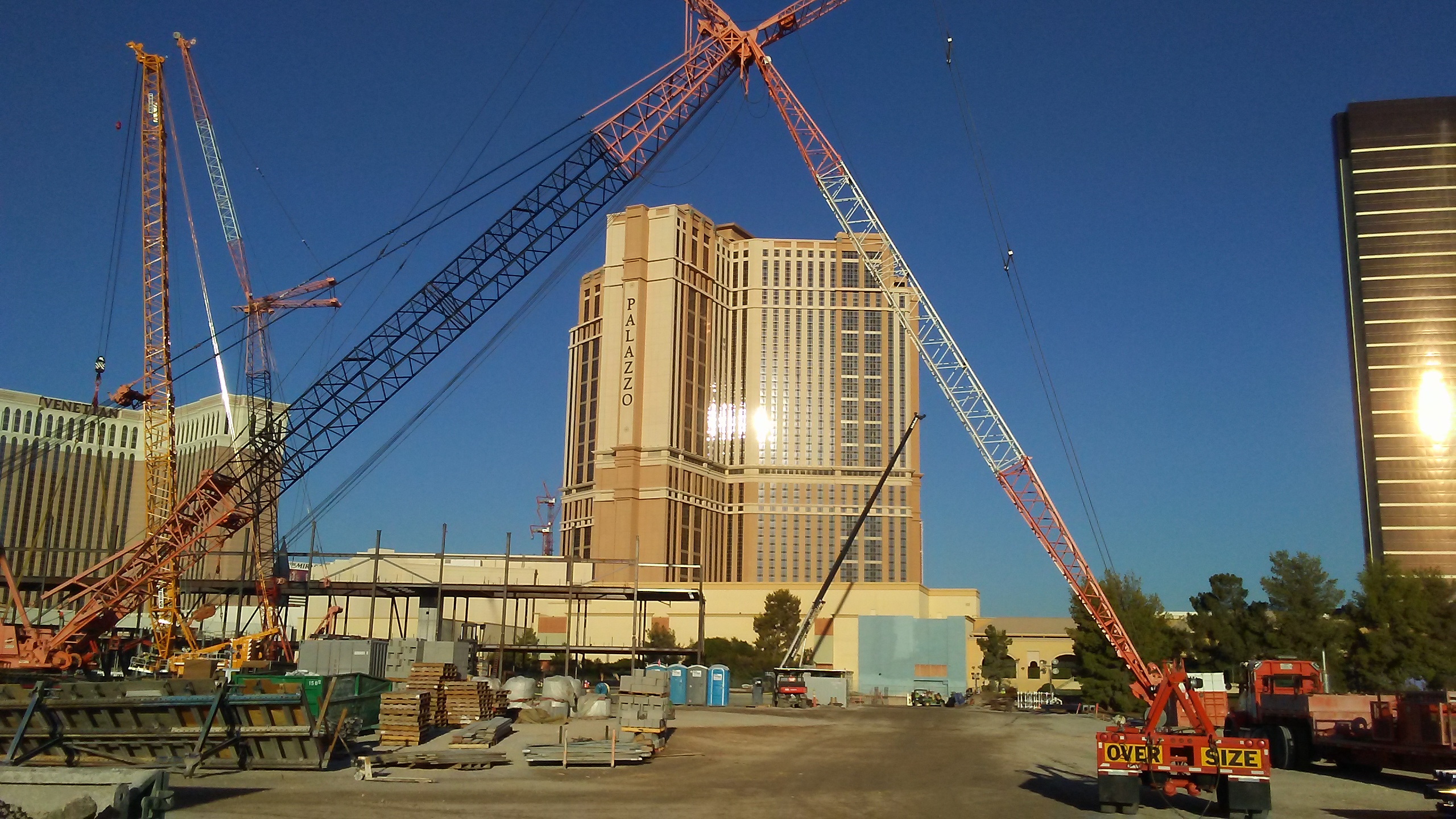

Construction Safety Officer Training CREDENTIALS
Prerequisite: OSHA 10, OSHA 30 HOUR SAFETY PROGRAM, Project Management
SAFETY OFFICER Credential - Price: $ 2,000.00 + $250.00 For Books
Project Management Price: $ 1,500.00
Total Cost: $ 3,500.00
Those who successfully complete a prescribed set of modules from the NISVT safety curricula receive a certificate, and wallet card. These designations are:
- Construction Site Safety Officer
- Project Manager
NISVT has developed an industry-wide approach to safety through a formal, nationally recognized training program. The Construction Site Safety OFFICER Training Program is a widely used safety system employed by contractors and owners who demand more from their on-site supervisors and safety technicians. This comprehensive standardized safety program deals with site-specific hazards and provides unparalleled national recognition.
- The program was designed to prepare trainees for the widely recognized safety certifications for Professionals, including the Construction Site Safety Officer.
- The safety training within NISVT curricula provides the foundation for change in safety culture, promoting a safety-first philosophy throughout every level of an organization – from the new employee to every level of management.
- Safety Technology – Safety Technology provides instruction on how to implement and administer a company’s safety program. This is designed for field managers, safety directors, safety committees, owner safety representatives, and insurance/loss control representatives.
- Note: This is above the OSHA 500 offered by OSHA. OSHA 500 is for those wanting to teach OSHA 10 AND 30 Classes only. While the Site Safety Technician Officer curriculum gives the tools needed for a Professional Safety Officer to properly administer the companies Safety Programs, monitor Construction activities, and protect the company from future lawsuits. The Project Manager portion trains the individual on the whole aspect of the projects Phase. In a typical project there are 16 phases that a project goes through from grading when the project starts, to installing all the finishes when the project ends. It is important for the Safety Officer to communicate with the other project managers and estimators on a project while it is being built.
Construction Site Safety Supervisor (CSSS)
|
|
Field Safety |
|
|
|
|||
|
|
Module Number |
Hours 45 |
QUIZ |
Module Title |
|||
|
01 |
101 Final |
2.5 |
25 25 |
Introduction to Safety Presents basic safety concepts and explains the difference between regulatory compliance and best practices. Introduces OSHA and describes how accidents and their associated costs affect everyone on a job site. Describes the OSHA focus four hazards. Discusses the selection and use of appropriate personal protective equipment (PPE). Describes fire protection and prevention. Provides an overview of the hazards and safeguards associated with hot and cold weather work, walking and working surfaces, and tools |
|||
|
02 |
120 Final |
5 |
10 10 |
Confined Spaces and Excavations Covers safety precautions related to work in confined space, including the responsibilities and duties of each member of the confined-space entry team. It also covers the safety hazards and safeguards required when working in an excavation, including an explanation of various trenching supports and soil types. |
|||
|
03 |
104 Final |
5 |
10 10 |
Work Zone Safety Explains how to recognize and use the signs, signals, and barricades commonly found on a job site. Also describes the hazards and safeguards associated with highway work zones. |
|||
|
04 |
121 Final |
5 |
10 10 |
Electrical Safety Discusses the risks associated with work around electricity and the effects of shock on the human body. Describes lockout/tagout procedures. Explains how to avoid electrical hazards. |
|||
|
05 |
122 Final |
5 |
15 15 |
Working From Elevations Discusses the hazards and safeguards associated with the use of aerial lifts, ladders, and scaffolding. Describes how to safely set up and use this equipment. Explains how to identify, avoid, and react to unsafe conditions when working from elevations. Covers the selection and use of appropriate fall-protection equipment. |
|||
|
06 |
110 Final |
3 |
5 10 |
Steel Erection -Discusses how to recognize, avoid, and prevent hazards associated with the use of steel-erection equipment. Describes the use of appropriate personal protective equipment. |
|||
|
07 |
123 Final |
5 |
10 10 |
Heavy Equipment, Forklift, and Crane Safety Covers the safety hazards and precautions necessary when working near heavy equipment. It also covers the general safety requirements for the use of forklifts and cranes. |
|||
|
08 |
119 Final |
2.5 |
10 10 |
Concrete and Masonry- Describes the safety hazards related to concrete and masonry work. Explains how to identify, avoid, and respond to these hazards. Covers job-site safety and personal protective equipment. |
|||
|
09 |
124 Final |
5 |
10 10 |
Introduction to Materials Handling |
|||
|
|
Total |
45.5 |
212 |
|
|||
|
|
|
|
|
|
|||
|
10 |
201 |
2.5 |
10 20 |
Introduction to Safety Technology - Introduction to Safety Technology (2.5 hours) Describes the responsibilities of a safety technician and identifies the basic components of a safety program. It also provides an overview of regulatory requirements. |
|||
|
11 |
202 |
2.5 |
10 |
Hazard Recognition, Evaluation, and Control-Hazard Recognition, Environmental Awareness, and Occupational Health (5 hours) Covers environmental and safety hazards. It explains how to evaluate risks and identify appropriate methods of hazard control. It also discusses environmental regulations for hazardous materials and describes the elements of a medical surveillance program. |
|||
|
12 |
203 |
2.5 |
10 |
Risk Analysis and Assessment Introduces the roles and responsibilities of the safety technician with regard to on-site inspections, audits, and observations. Explains the purpose of safety inspections and how to properly conduct safety audits and employee observations. |
|||
|
13 |
204 |
2.5 |
10 |
Inspections, Audits, and Observations (2.5 Hours) Introduces the roles and responsibilities of the safety technician with regard to on-site inspections, audits, and observations. Explains the purpose of safety inspections and how to properly conduct safety audits and employee observations. |
|||
|
14 |
205 Exam |
2.5 |
10 10 |
Employee Motivation – Stresses the importance of effectively communicating safety policies and procedures to all employees on the job site. Discusses how to provide employee recognition, discipline, and motivation. |
|||
|
15 |
206-03 |
2.5 |
|
Site-Specific ES&H Plans -Environmental Safety and Health Environmental Safety and Health (ES&H) plans must be modified to meet job-specific conditions. Explains how to make these modifications, coordinate implementation of ES&H plans, identify job-specific hazards and requirements using pre-bid checklists, and evaluate hazard risks.
|
|||
|
16 |
207 |
2.5 |
|
Emergency-Action Plans Focuses on the basics of emergency action plans and media communications. |
|||
|
17 |
208 |
2.5 |
|
JSAs and TSAs Covers the purposes of and differences between job safety analyses and task safety analyses. Explains how to properly conduct safety analyses. |
|||
|
18 |
209 |
2.5 |
|
|
|||
|
19 |
210 224 |
2.5 |
|
Work Permit Policies Permits and Policies (5 hours) Provides an overview of the various work permits required on a construction site. It also provides detailed procedures for completing a hot work permit, lockout/tagout, and confined-space entry permit. |
|||
|
20 |
211 |
2.5 |
|
Confined-Space Entry Procedures -Stresses the safety requirements of confined-space work. Describes permit, entry, emergency, and rescue procedures. Also covers the main types of atmospheric hazards and the procedures used for testing for them in confined spaces. |
|||
|
21 |
212 223 |
2.5 |
|
Safety Meetings - Safety Orientation and Safety Meetings -Covers describes how to prepare and deliver effective training using both formal safety meetings and tailgate talks. |
|||
|
22 |
213 |
2.5 |
|
|
|||
|
23 |
214 |
2.5 |
|
Accident Investigation: Data Analysis Expands on the concept of accident investigation as a preventative tool. Participants study and practice the methods commonly used for performing accident investigation data analysis. |
|||
|
24 |
215 |
2.5 |
|
|
|||
|
25 |
216 |
2.5 |
|
OSHA Inspection Procedures Focuses on the safety technician’s role during OSHA inspections. Covers the process and purpose of OSHA site inspections. Explains the difference between focused and wall-to-wall inspections, the appropriate follow-up actions resulting from an inspection, and the consequences of OSHA citations, violations, and fines. |
|||
|
26 |
217 221 |
2.5 |
10 |
ES&H Data Tracking and Trending - Safety Data Tracking and Trending (5 hours) Covers how to conduct safety inspections, audits, and employee safety observations. It discusses both traditional and predictive methods of performance measurement and explains how to analyze safety data in order to prevent future incidents. |
|||
|
27 |
218 |
2.5 |
|
Environmental Awareness - Introduces ways to minimize hazardous-waste production and prevent water and soil contamination. Covers the training and medical surveillance requirements for personnel working with materials such as hazardous waste, lead, asbestos, and silica. Also covered are the primary types of environmental problems and the hazardous-waste shipping requirements common on a construction site. |
|||
|
28 |
219 Exam |
2.5 |
14 15 |
Describes the personal protective equipment that must be used when working with concrete and masonry as well as the common jobsite and health hazards associated with this type of work. |
|||
|
|
|
45.00 |
|
Hours |
|||
|
29 |
220 Exam |
2.5 |
15 15 |
Job Safety Analysis and Pre-Task Planning Provides guidance on safety performance analysis and employee coaching. It also explains how to complete job and task safety planning. |
|||
|
30 |
221 Exam |
|
10 10 |
Safety Data Tracking and Trending |
|||
|
31 |
222 Exam |
|
15 20 |
Site-Specific Safety Plans - Explains how to use pre-bid checklists to identify hazards and develop a site safety plan. It also describes how to develop an emergency action plan. |
|||
|
32 |
223 Exam |
|
10 10 |
Safety Orientation and Safety Meetings Covers describes how to prepare and deliver effective training using both formal safety meetings and tailgate talks.
|
|||
|
33 |
224 Exam |
|
15 15 |
Permits and Policies - |
|||
|
34 |
225 Exam |
|
10 10 |
Incident Investigations, Policies, and Analysis -Describes how to conduct an incident investigation, including employee interviews and reporting requirements. It also explains how to analyze an incident to determine the root cause and prevent future incidents. |
|||
|
35 |
226 Exam |
|
15 15 |
OSHA Inspections and Recordkeeping -Discusses the OSHA requirements for record-keeping and explains how to manage the safety and health records for a job site. It also covers the two main types of OSHA inspections. |
|||
|
|
|
|
|
|
The
Trainee must complete the entire Field Safety curriculum and either 11 modules from the Safety Technology 1st Edition curriculum or five modules from the Safety Technology Version 2 curriculum for this credential.








